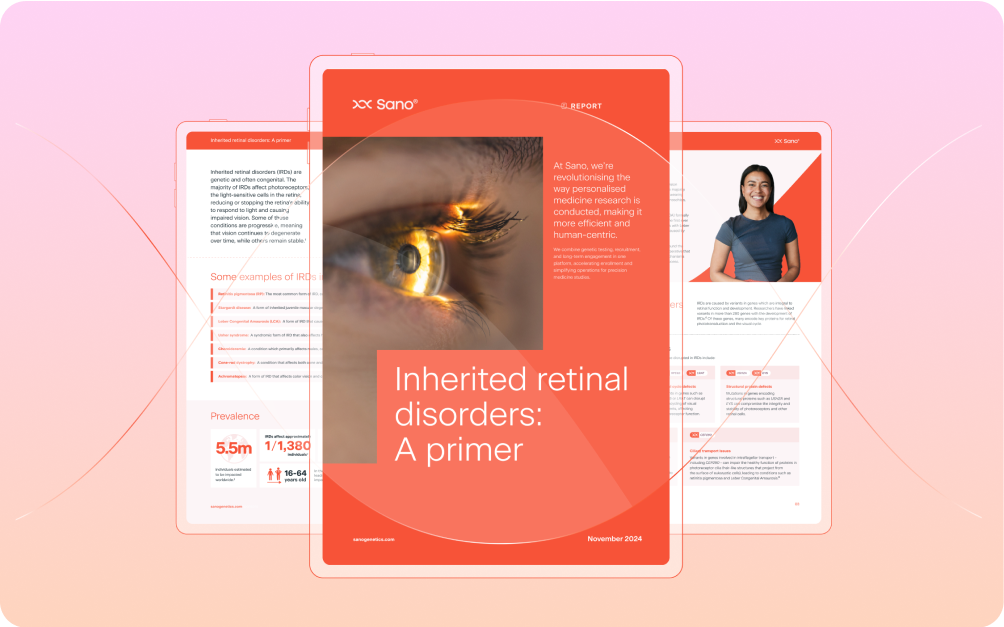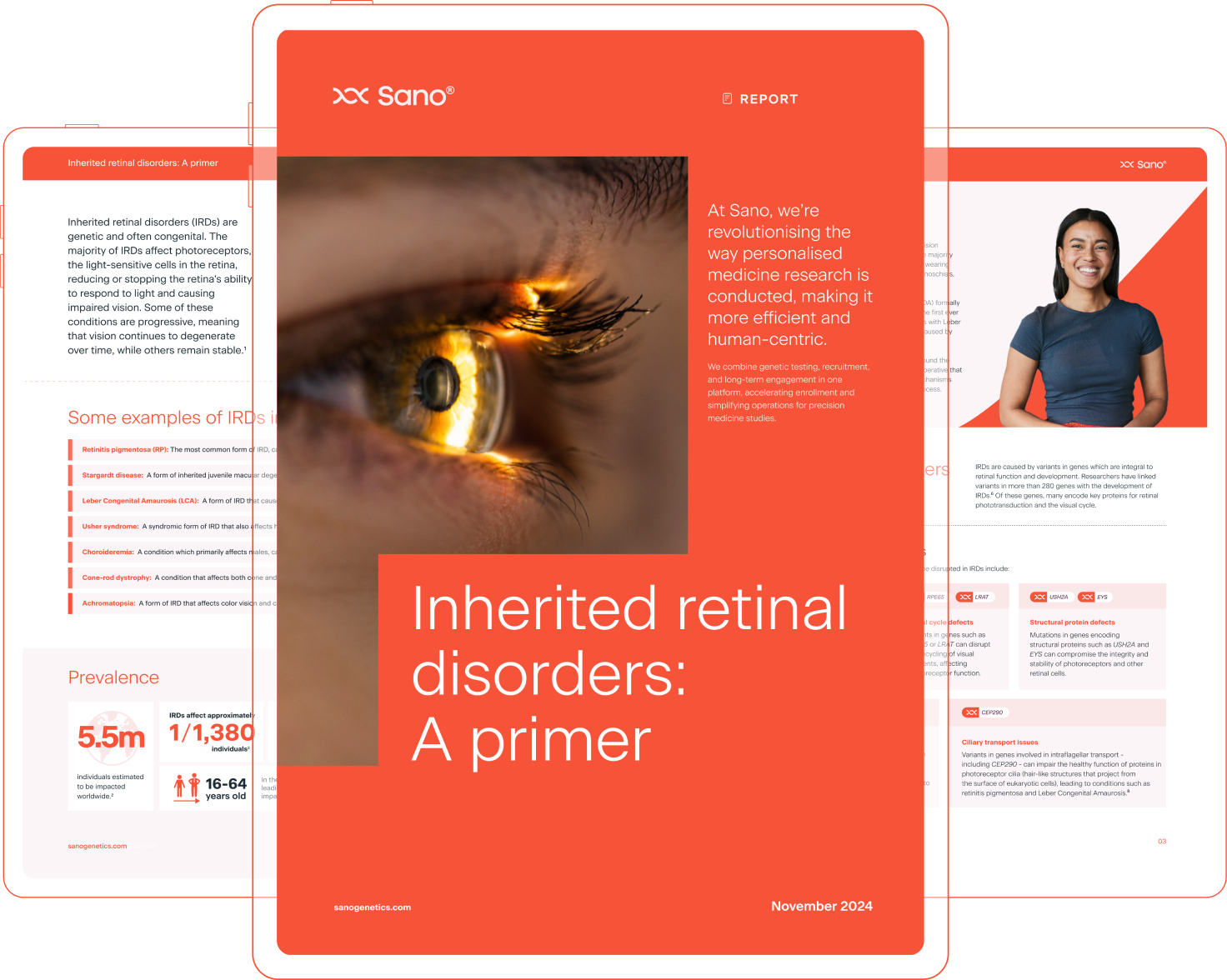Exploring inherited retinal disorders (IRDs): Causes, challenges, and future treatments [report]

Inherited retinal disorders (IRDs) are a diverse group of genetic eye conditions that impact millions worldwide, affecting light-sensitive cells in the retina and leading to vision impairment. Our latest report, "Inherited retinal Disorders: A primer," explores these conditions, their prevalence, the genetics behind them, and current treatment options.
What are IRDs?
IRDs disrupt the retina's response to light, causing varying degrees of vision loss. While some IRDs remain stable, others continue to worsen over time which makes diagnosis and management even more challenging. Examples of these conditions include:
- Retinitis Pigmentosa (RP): The most common IRD, causing progressive vision loss starting with night blindness.
- Stargardt Disease: A form of juvenile macular degeneration leading to central vision loss.
- Leber Congenital Amaurosis (LCA): Known for causing severe visual impairment from infancy.
- Usher Syndrome: A syndrome impacting both vision and hearing, often linked with retinitis pigmentosa.
- Choroideremia: Primarily affecting males, causing gradual loss of vision.
IRDs by the numbers
Approximately one in every 1,380 people globally, or 5.5 million individuals, are affected by IRDs. In the UK, IRDs are a leading cause of severe sight impairment in working-age adults, while in Australia, they are the most common cause of blindness among the working population. Despite their prevalence, most IRDs currently have no available cure.
The genetics of IRDs
More than 280 genes have been linked to IRDs, with many affecting phototransduction—the process that allows the eye to convert light into visual signals.
The inheritance patterns of IRDs (autosomal recessive, autosomal dominant, and X-linked recessive) make it even more difficult to diagnose and predict these disorders. Autosomal recessive patterns, for instance, require both parents to carry a gene variant, often making carriers unaware of their status without genetic testing. Understanding these patterns can help in managing, and potentially preventing, the spread of IRDs within families.
Current treatment options and the path forward
Recent advancements in gene therapy are offering hope, yet with limited treatment options for most IRDs, ongoing research is going to be essential to understand the genetic mechanisms involved and to accelerate treatment development.
With overlapping symptoms and numerous genetic causes, diagnosing IRDs is a challenge, often leading to delays that impact treatment options. Advances in genetic research and screening are bringing new hope for earlier and more accurate diagnoses, which is crucial for improving patient outcomes. Download the full report to explore more about the genetics of IRDs, as well as what the future holds for treatment options and research.


